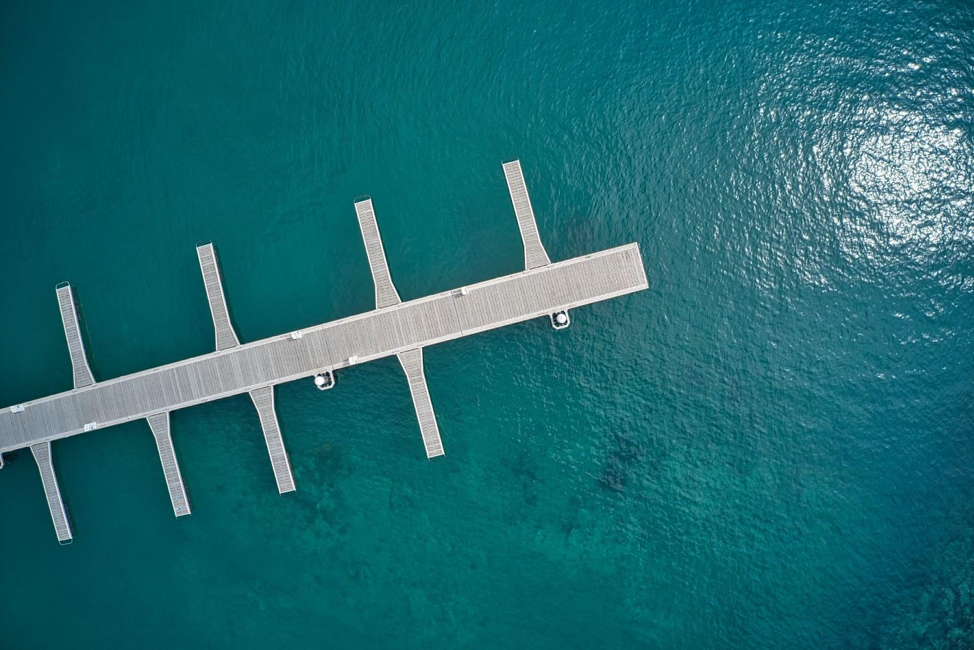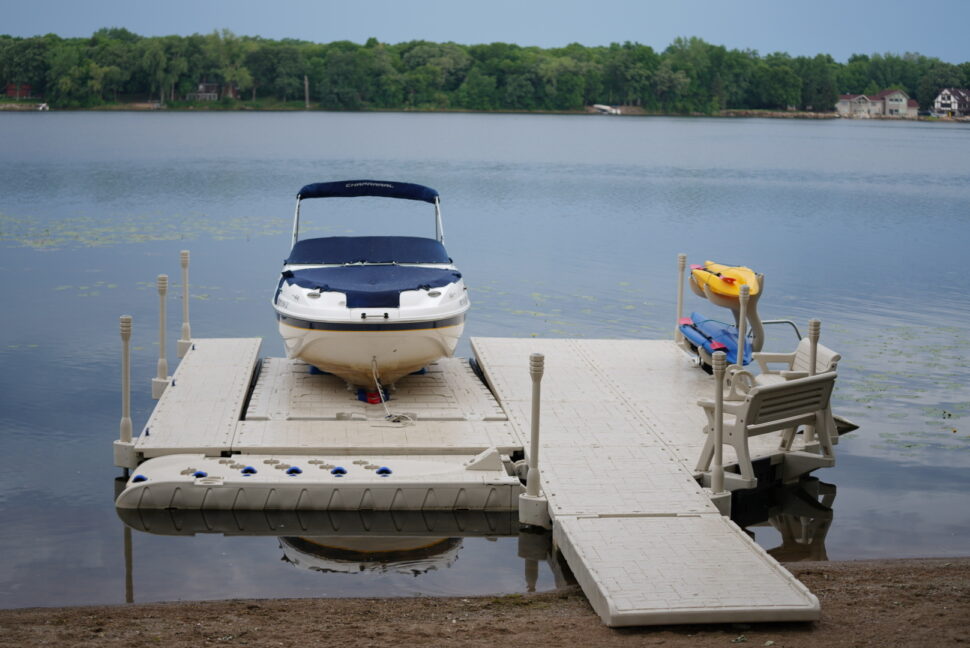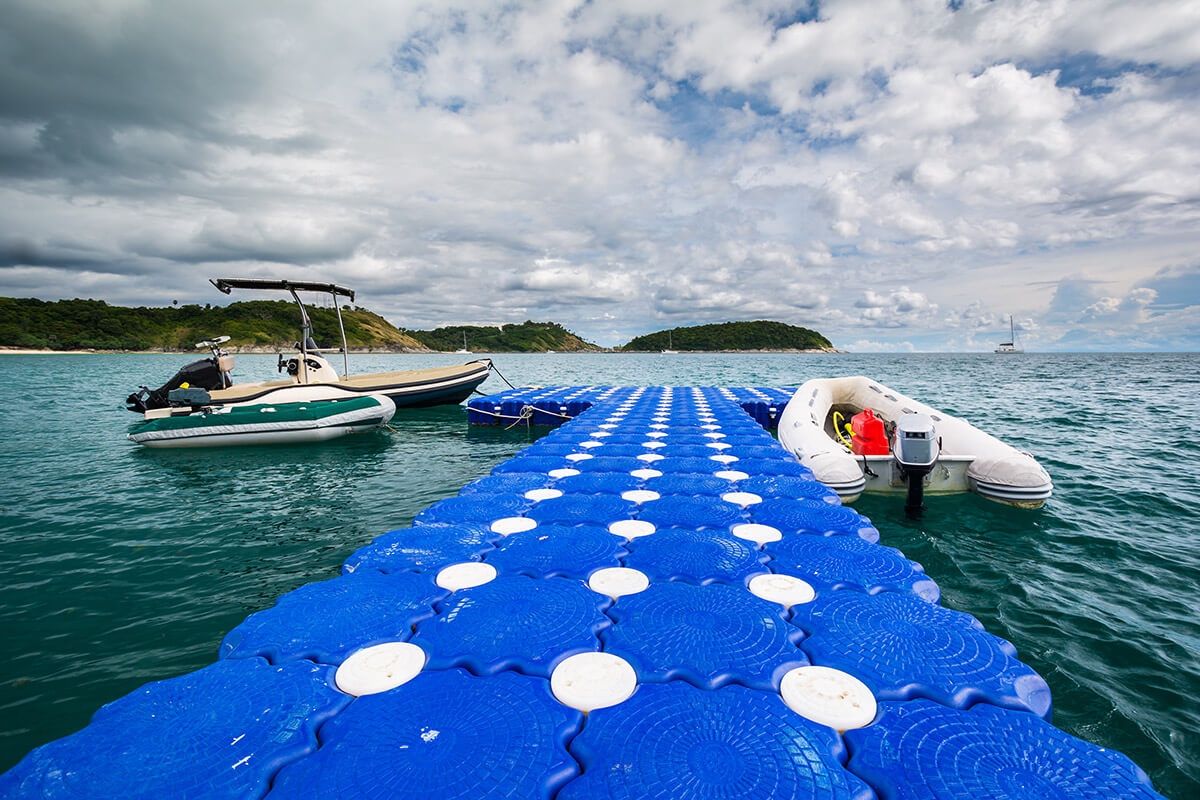Upgrade Your Waterfront With Sturdy Floating Docks
Upgrading your waterfront with sturdy floating docks can substantially improve both performance and looks, providing a functional solution for various water tasks. With a range of materials available, including low-maintenance choices and conventional wood, picking the appropriate dock can complement your personal design and satisfy practical needs.
Advantages of Floating Docks
Floating docks deal a plethora of benefits that boost their allure for different maritime applications. Among the key advantages is their flexibility to altering water levels - floating docks. Unlike traditional fixed docks, floating docks increase and loss with the trend, making sure consistent ease of access for watercrafts and watercraft no matter ecological problems. This function significantly minimizes the risk of damages to vessels, as they stay firmly anchored also during fluctuations in water deepness.
Additionally, floating docks are easier to transfer and mount, offering flexibility for seasonal or temporary use. Their modular layout permits personalization to fit specific needs, whether for exclusive marinas, domestic beachfronts, or industrial applications.
Furthermore, floating docks produce very little disturbance to the water atmosphere, maintaining local communities and decreasing the chance of disintegration. They likewise offer enhanced security and security for users, as their buoyant nature uses a more forgiving surface than rigid frameworks.
Furthermore, floating docks can help with a varied variety of tasks, such as angling, swimming, and recreational boating, making them a valuable property for beachfront development. Their flexibility and usefulness make floating docks a recommended option for a variety of marine tasks.
Picking the Right Materials
Picking suitable products for floating docks is crucial to their long life, efficiency, and general effectiveness. When selecting materials, take into consideration variables such as ecological direct exposure, maintenance needs, and architectural stability. Typical materials consist of timber, plastic, light weight aluminum, and composite choices, each offering distinct advantages and drawbacks.
Timber, while aesthetically pleasing, requires normal upkeep to protect against rot and decay. Pressure-treated timber can improve longevity, yet it may still catch water damage over time. Plastic floats, typically made from high-density polyethylene, are resistant to corrosion and need marginal maintenance, making them an appealing selection for low-maintenance applications.
Light weight aluminum is an additional feasible alternative, understood for its stamina and lightweight residential properties. It is immune to rust and can stand up to rough climate conditions, although it may be extra pricey than various other materials. Compound materials incorporate the most effective attributes of wood and plastic, supplying a resistant and low-maintenance alternative that resembles the appearance of timber without the connected drawbacks.
Eventually, the selection of material need to line up with the planned use, ecological considerations, and spending plan constraints, ensuring a long lasting and functional floating dock that fulfills your particular demands.
Installation Refine Overview
The successful installment of a floating dock counts on mindful planning and implementation, ensuring that it operates properly in its intended atmosphere. The initial step includes assessing site problems, including water depth, shoreline attributes, and dominating weather patterns, which will notify the dock layout and anchoring system.
Following the site evaluation, the following stage is to prepare the floating dock components. This includes constructing the structure, my link securing floats, and connecting any kind of necessary hardware. It is important to make certain that all links are durable and waterproof to withstand marine conditions.
When the dock is set up, the installment procedure starts with placing the dock in the water. This can entail a crane or various other lifting equipment, particularly for bigger frameworks. Proper placement is important for functionality and safety and security.

Maintenance Tips for Longevity
Normal upkeep is important for ensuring the longevity and ideal efficiency of a drifting dock. To attain this, begin with routine evaluations a minimum of Full Article twice a year, concentrating on the integrity of the dock's structure, consisting of the flotation tools and connecting equipment. Search for indications of corrosion, wear, or damages, and address any type of problems immediately to protect against further damage.
Cleaning is one more critical element of maintenance. Get rid of particles, algae, and barnacles from the dock's surface to stop unsafe problems and keep aesthetic appeal. Utilize a soft brush and a mild detergent to prevent damaging the dock's products.
In addition, make sure that the dock is properly anchored and secured to endure seasonal modifications in water degrees and climate condition. Examine the anchoring system for security and make adjustments as necessary.
Enhancing Your Outdoor Visual
To develop an aesthetically enticing outdoor space, incorporating a floating dock can considerably enhance the overall aesthetic of your waterfront building. Floating docks are not just useful yet can also serve as a striking centerpiece that enhances the natural environments - floating dock services. Offered in different materials and designs, these docks can be tailored to match your property's building design and landscape
The enhancement of ornamental elements, such as integrated lights or fashionable barriers, further elevates the dock's aesthetic allure. Think about using natural timber surfaces, which blend perfectly with the setting, or choosing contemporary materials like light weight aluminum or composite outdoor decking that offer a streamlined, modern look.
Strategically positioning planters or seating areas on or around the dock can create welcoming spaces that urge relaxation and satisfaction of waterside views. In addition, integrating colors and textures that balance with your landscape will produce a cohesive visual throughout your outdoor location.

Final Thought

Upgrading your waterside with resilient floating docks can substantially boost both functionality and visual appeals, supplying a versatile service for numerous water activities. Unlike conventional set docks, floating docks increase and loss with the tide, making certain consistent ease of access for watercrafts and boat no matter of environmental conditions.Choosing proper products for floating docks is vital to their durability, efficiency, and total performance.When the dock is constructed, the installation process commences with positioning the dock in the water.In summary, floating docks deal countless advantages, including versatility to water degree adjustments and a selection of material options.